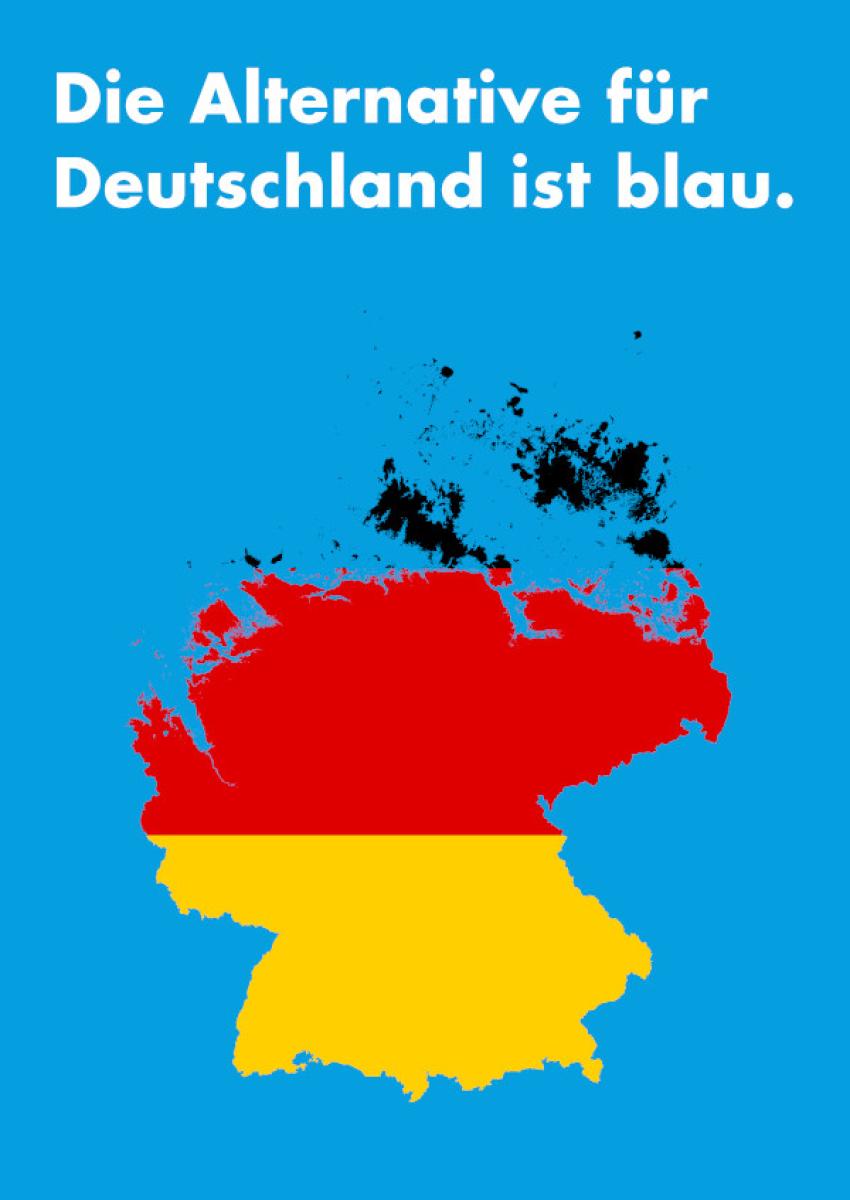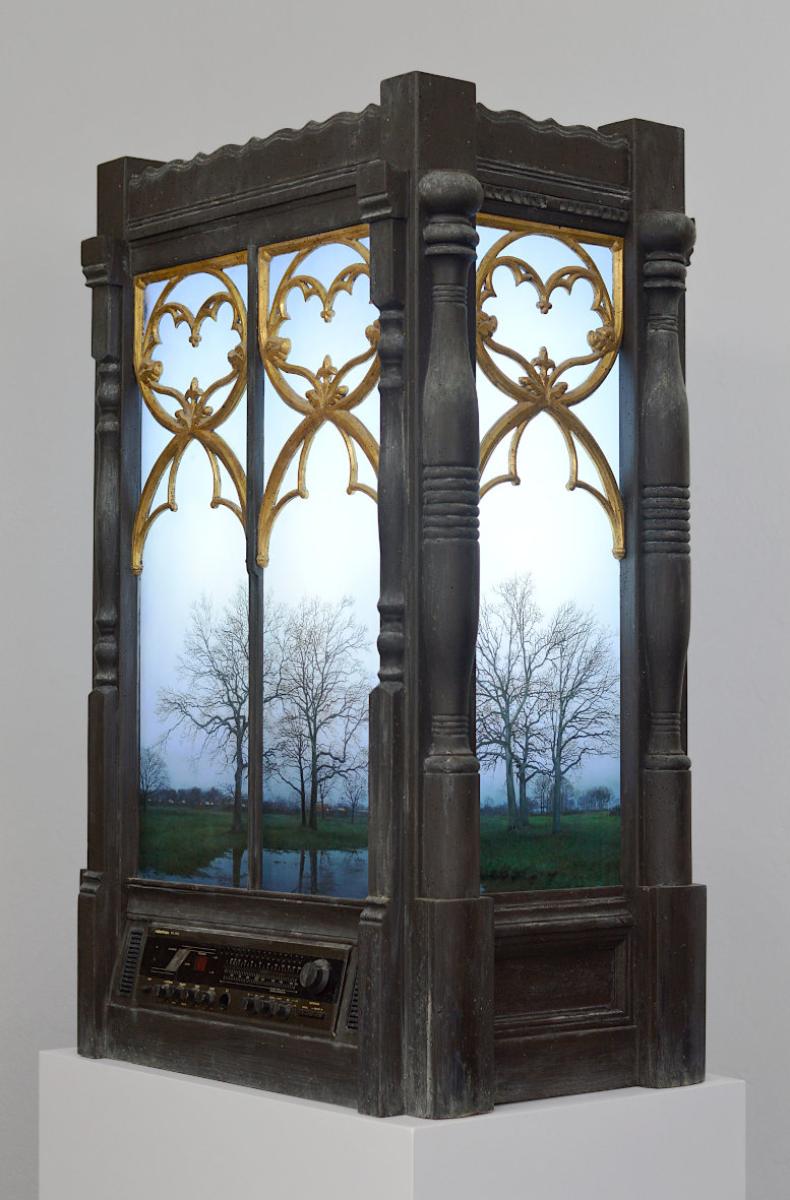
Thomas Behling: "Die Alternative für Deutschland ist blau." – "The alternative for Germany is blue.", Poster, 84 x 59 cm
"Schlaustärke. Klimaschutz statt Fake News"
“Fake news (...) is deliberately false or misleading information that is often disseminated in the form of news. It is deliberately created to manipulate public opinion, spread misinformation or pursue specific political, social or economic goals. Fake news can take the form of articles, images, videos or social media posts and is often difficult to distinguish from real news. Due to their often deliberately emotional nature, they often spread virally on social networks without editorial control.
The spread of fake news can have serious consequences, including distorting public opinion, spreading distrust of established media and institutions and, in some cases, even encouraging violence or social unrest” (source: wikipedia)
Newspapers from the Springer press in Germany headline: “Germany facing the solar debacle”. This is one of many fake news stories in this regard. The energy transition is going much better than the right-wing scaremongers from BILD, WELT and others would have us believe. Wind turbines and solar power complement each other well, are comparatively cheap and without them we would no longer be able to meet our current energy needs. But in view of the impending climate collapse, we would have to massively accelerate the change. In fact, disinformation about climate change has been spread for decades, and with fatal success: millions of people are already dying from the consequences of climate change, particularly in the global South, and the actual collapse is still to come. Anyone who spreads such fake news is walking over dead bodies.
artists:
Tom Albrecht, Thomas Behling, Carsten Borck, Merit Fakler, Stephan Groß, Norbert Hillwig, Šarūnė Kalininaitė (5sarunes), Tom Lane, Vera Leisibach, Diana Elena Paun, Stefanie Raetsch, Alexander Rommel (aerroscape), Lorina Speder, Anna Staffel, Tajda Stiplovšek-Jug, Emily Wisniewski, Nora Zang
Duration 4.7. - 15.8.2025
Opening on Friday, July 4, 2025 at 7 pm
Welcome Tom Albrecht, introduction to the exhibition Katja Hock, Blues Kitchen play blues and folk with vocals and guitars.
Artists: Talk inside Fri. 11.7., 7 pm
Artists of the exhibition talk about their works on site and online with guests. Moderated by Katja Hock
Happy Fake News Party Fri. 25.7., 7 pm
Humor dispels rumors. Guests collect fake news and sort them by strength and subversion. Action by Tom Albrecht.
Simply plug in: solar power for tenants and owners. Fri. 8.8., 7 p.m.
Lecture with discussion: M.Sc. Hai Yen, Le, SolarZentrum Berlin. Law, financing, profitability, examples, advice.
Finissage, performance with voice and objects. Fri. 15.8., 7 pm.
Anna Staffel: FAKTEN ATTRAKTOR - an approach to reality or what Mandelbrot would have thought
GG3 – Group Global 3000 e.V.
Leuschnerdamm 19
10999 Berlin
Germany
Opening hours:
Tuesday, Friday: 5 pm - 8 pm
Free admission
